Andreas Diacon
Automatic Tuberculosis and COVID-19 cough classification using deep learning
May 11, 2022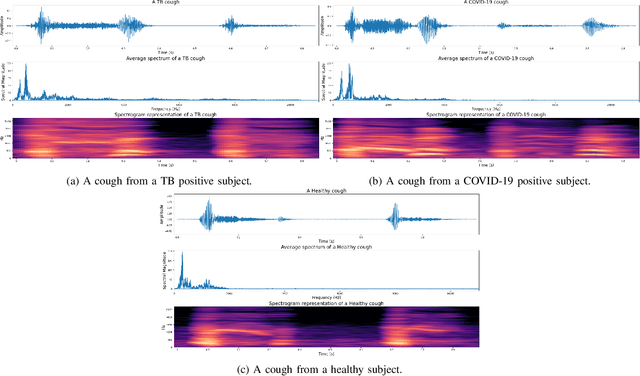
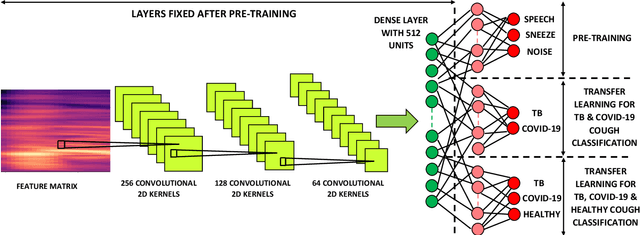
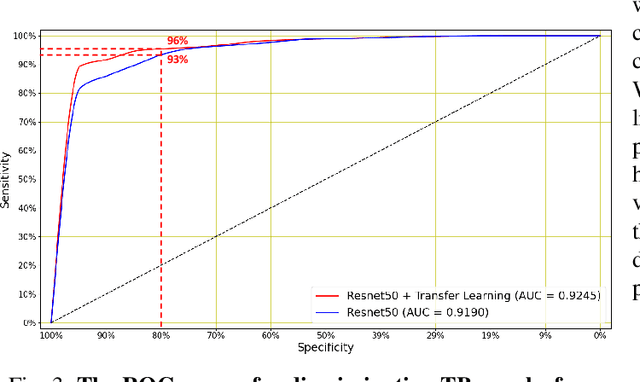

Abstract:We present a deep learning based automatic cough classifier which can discriminate tuberculosis (TB) coughs from COVID-19 coughs and healthy coughs. Both TB and COVID-19 are respiratory disease, have cough as a predominant symptom and claim thousands of lives each year. The cough audio recordings were collected at both indoor and outdoor settings and also uploaded using smartphones from subjects around the globe, thus contain various levels of noise. This cough data include 1.68 hours of TB coughs, 18.54 minutes of COVID-19 coughs and 1.69 hours of healthy coughs from 47 TB patients, 229 COVID-19 patients and 1498 healthy patients and were used to train and evaluate a CNN, LSTM and Resnet50. These three deep architectures were also pre-trained on 2.14 hours of sneeze, 2.91 hours of speech and 2.79 hours of noise for improved performance. The class-imbalance in our dataset was addressed by using SMOTE data balancing technique and using performance metrics such as F1-score and AUC. Our study shows that the highest F1-scores of 0.9259 and 0.8631 have been achieved from a pre-trained Resnet50 for two-class (TB vs COVID-19) and three-class (TB vs COVID-19 vs healthy) cough classification tasks, respectively. The application of deep transfer learning has improved the classifiers' performance and makes them more robust as they generalise better over the cross-validation folds. Their performances exceed the TB triage test requirements set by the world health organisation (WHO). The features producing the best performance contain higher order of MFCCs suggesting that the differences between TB and COVID-19 coughs are not perceivable by the human ear. This type of cough audio classification is non-contact, cost-effective and can easily be deployed on a smartphone, thus it can be an excellent tool for both TB and COVID-19 screening.
Accelerometer-based Bed Occupancy Detection for Automatic, Non-invasive Long-term Cough Monitoring
Feb 08, 2022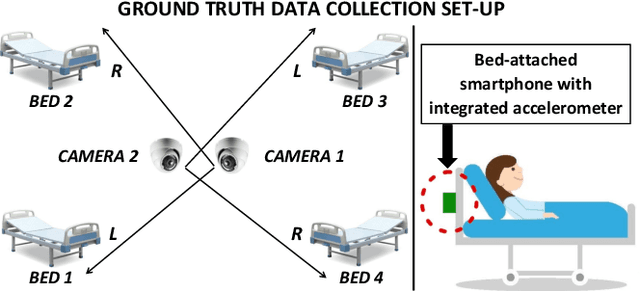
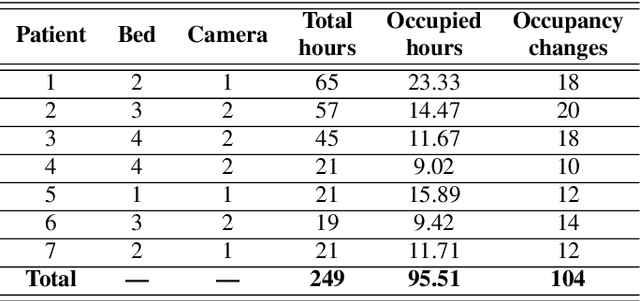
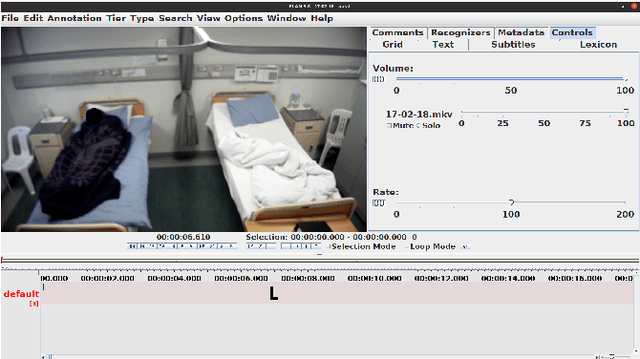

Abstract:We present a machine learning based long-term cough monitoring system by detecting patient's bed occupancy from a bed-attached smartphone-inbuilt accelerometer automatically. Previously this system was used to detect cough events successfully and long-term cough monitoring requires bed occupancy detection, as the initial experiments show that patients leave their bed very often for long period of time and using video-monitoring or pressure sensors are not patient-favourite alternatives. We have compiled a 249-hour dataset of manually-labelled acceleration signals gathered from seven adult male patients undergoing treatment for tuberculosis (TB). The bed occupancy detection process consists of three detectors, among which the first one classifies occupancy-change with high sensitivity, low specificity and the second one classifies occupancy-interval with high specificity, low sensitivity. The final state detector corrects the miss-classified sections. After using a leave-one-patient-out cross-validation scheme to train and evaluate four classifiers such as LR, MLP, CNN and LSTM; LSTM produces the highest area under the curve (AUC) of 0.94 while comparing the predicted bed occupancy as the output from the final state detector with the actual bed occupancy sample by sample. We have also calculated colony forming unit and time to positivity of the sputum samples of TB positive patients who were monitored for 14 days and the proposed system was used to predict daily cough rates. The results show that patients who improve under TB treatment have decreasing daily cough rates, indicating the proposed automatic, quick, non-invasive, non-intrusive, cost-effective long-term cough monitoring system can be extremely useful in monitoring patients' recovery rate.
Wake-Cough: cough spotting and cougher identification for personalised long-term cough monitoring
Oct 07, 2021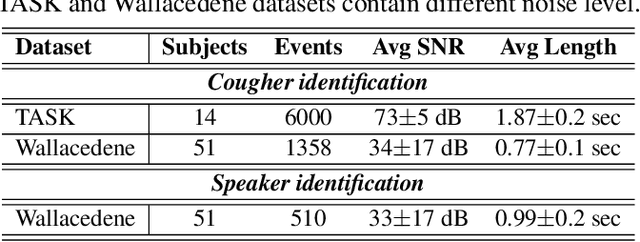
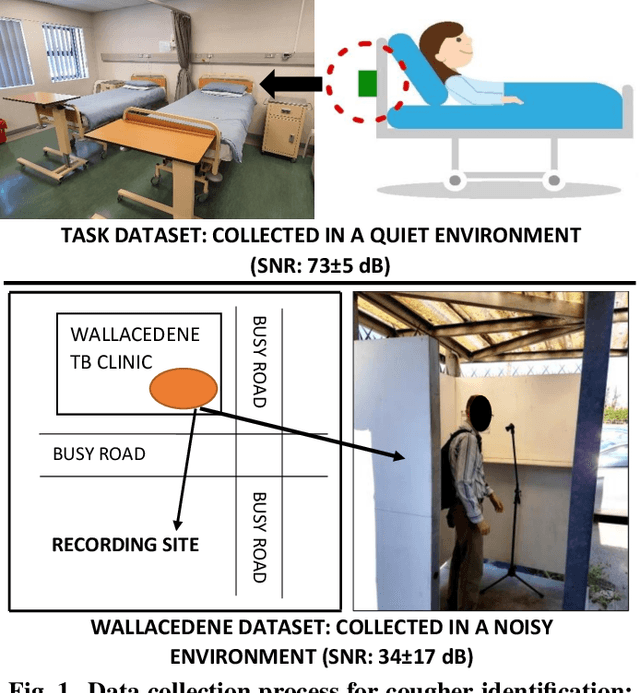
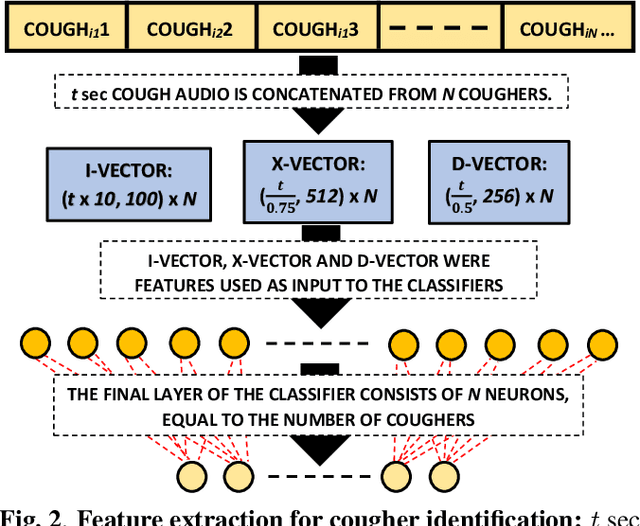
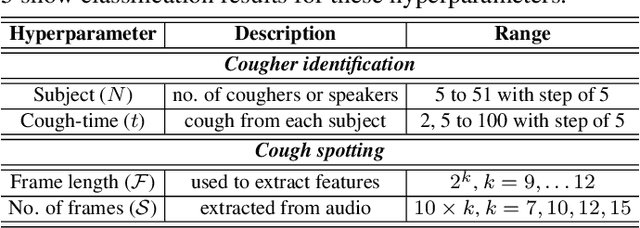
Abstract:We present 'wake-cough', an application of wake-word spotting to coughs using Resnet50 and identifying coughers using i-vectors, for the purpose of a long-term, personalised cough monitoring system. Coughs, recorded in a quiet (73$\pm$5 dB) and noisy (34$\pm$17 dB) environment, were used to extract i-vectors, x-vectors and d-vectors, used as features to the classifiers. The system achieves 90.02\% accuracy from an MLP to discriminate 51 coughers using 2-sec long cough segments in the noisy environment. When discriminating between 5 and 14 coughers using longer (100 sec) segments in the quiet environment, this accuracy rises to 99.78\% and 98.39\% respectively. Unlike speech, i-vectors outperform x-vectors and d-vectors in identifying coughers. These coughs were added as an extra class in the Google Speech Commands dataset and features were extracted by preserving the end-to-end time-domain information in an event. The highest accuracy of 88.58\% is achieved in spotting coughs among 35 other trigger phrases using a Resnet50. Wake-cough represents a personalised, non-intrusive, cough monitoring system, which is power efficient as using wake-word detection method can keep a smartphone-based monitoring device mostly dormant. This makes wake-cough extremely attractive in multi-bed ward environments to monitor patient's long-term recovery from lung ailments such as tuberculosis and COVID-19.
Automatic non-invasive Cough Detection based on Accelerometer and Audio Signals
Aug 31, 2021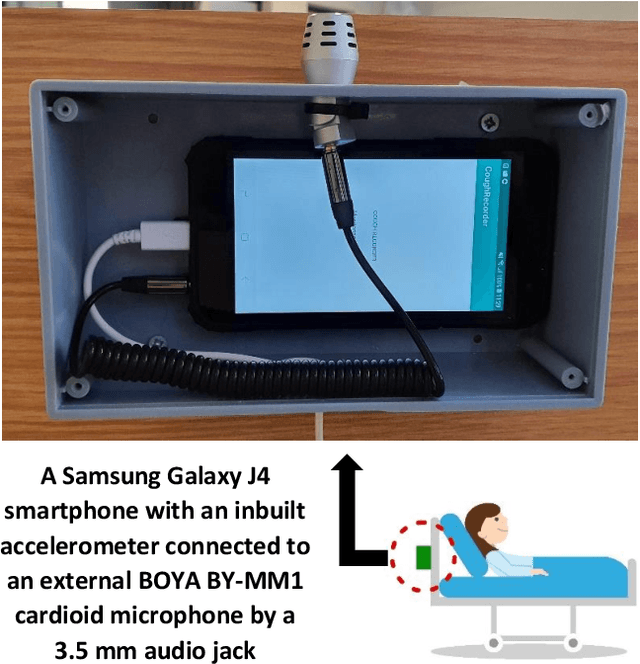
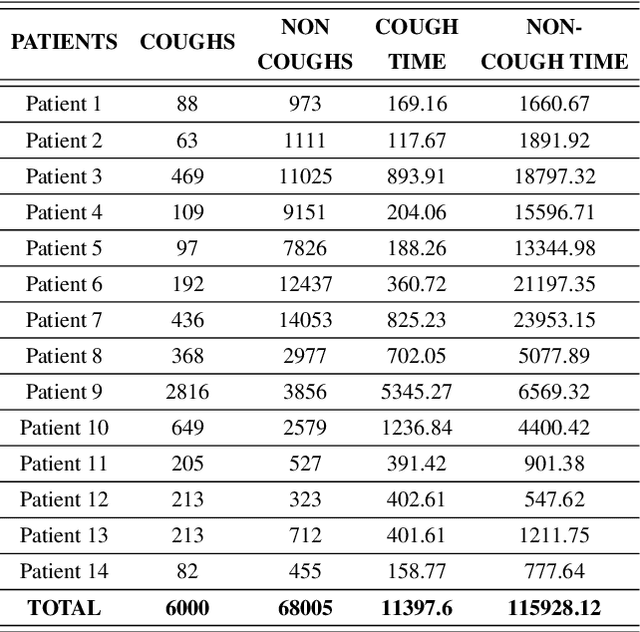
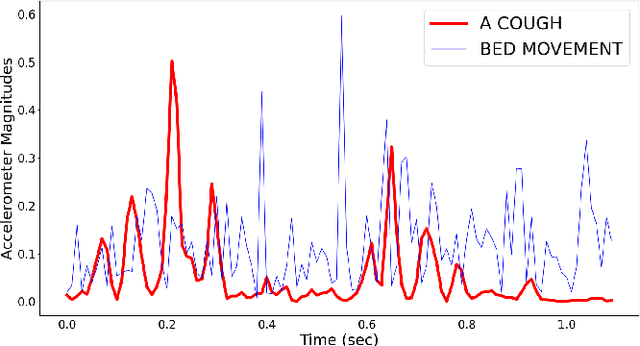

Abstract:We present an automatic non-invasive way of detecting cough events based on both accelerometer and audio signals. The acceleration signals are captured by a smartphone firmly attached to the patient's bed, using its integrated accelerometer. The audio signals are captured simultaneously by the same smartphone using an external microphone. We have compiled a manually-annotated dataset containing such simultaneously-captured acceleration and audio signals for approximately 6000 cough and 68000 non-cough events from 14 adult male patients in a tuberculosis clinic. LR, SVM and MLP are evaluated as baseline classifiers and compared with deep architectures such as CNN, LSTM, and Resnet50 using a leave-one-out cross-validation scheme. We find that the studied classifiers can use either acceleration or audio signals to distinguish between coughing and other activities including sneezing, throat-clearing, and movement on the bed with high accuracy. However, in all cases, the deep neural networks outperform the shallow classifiers by a clear margin and the Resnet50 offers the best performance by achieving an AUC exceeding 0.98 and 0.99 for acceleration and audio signals respectively. While audio-based classification consistently offers a better performance than acceleration-based classification, we observe that the difference is very small for the best systems. Since the acceleration signal requires less processing power, and since the need to record audio is sidestepped and thus privacy is inherently secured, and since the recording device is attached to the bed and not worn, an accelerometer-based highly accurate non-invasive cough detector may represent a more convenient and readily accepted method in long-term cough monitoring.
Deep Neural Network based Cough Detection using Bed-mounted Accelerometer Measurements
Feb 09, 2021

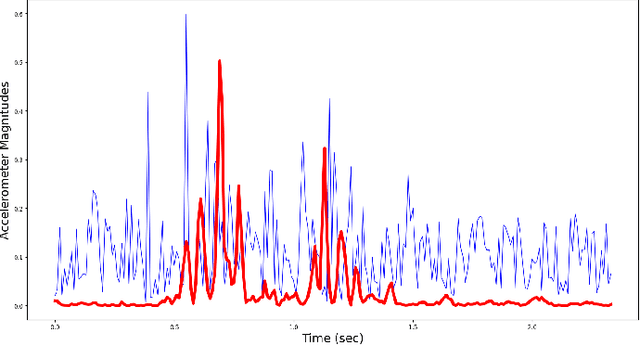

Abstract:We have performed cough detection based on measurements from an accelerometer attached to the patient's bed. This form of monitoring is less intrusive than body-attached accelerometer sensors, and sidesteps privacy concerns encountered when using audio for cough detection. For our experiments, we have compiled a manually-annotated dataset containing the acceleration signals of approximately 6000 cough and 68000 non-cough events from 14 adult male patients in a tuberculosis clinic. As classifiers, we have considered convolutional neural networks (CNN), long-short-term-memory (LSTM) networks, and a residual neural network (Resnet50). We find that all classifiers are able to distinguish between the acceleration signals due to coughing and those due to other activities including sneezing, throat-clearing and movement in the bed with high accuracy. The Resnet50 performs the best, achieving an area under the ROC curve (AUC) exceeding 0.98 in cross-validation experiments. We conclude that high-accuracy cough monitoring based only on measurements from the accelerometer in a consumer smartphone is possible. Since the need to gather audio is avoided and therefore privacy is inherently protected, and since the accelerometer is attached to the bed and not worn, this form of monitoring may represent a more convenient and readily accepted method of long-term patient cough monitoring.
 Add to Chrome
Add to Chrome Add to Firefox
Add to Firefox Add to Edge
Add to Edge